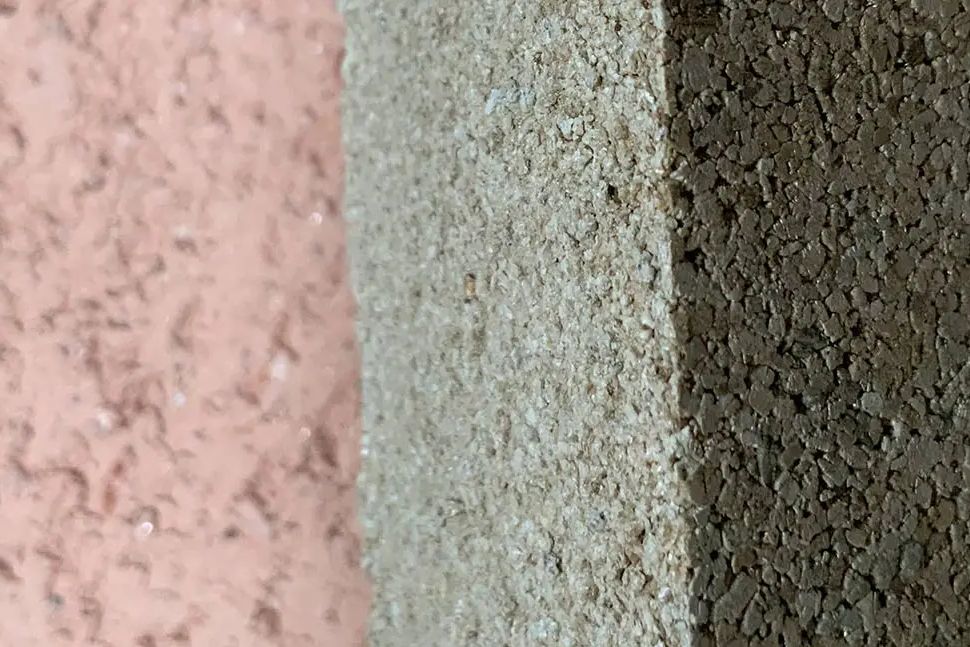Fireclay vs. vermiculite
A comparison of the two stove construction materials
Fireclay and vermiculite – both materials are used in stove construction.
What are the differences? What are the advantages and disadvantages? And where are the materials used?
The main difference: fireclay stores, vermiculite insulates
If you look at the material properties, fireclay and vermiculite differ in one respect in particular: fireclay stores heat energy very well and releases it evenly. Vermiculite, on the other hand, is primarily thermally insulating. This is due to the different density and therefore thermal conductivity of the materials: fireclay has a higher density and thermal conductivity.

What are the advantages and disadvantages of both materials?
Vermiculite is easier to work with than fireclay. However, due to its lower density, vermiculite also has a lower strength, especially when exposed to frequent temperature changes. As a result, vermiculite is more sensitive to mechanical stress and moisture and may need to be replaced more frequently depending on the location. Fireclay, on the other hand, is more temperature-resistant and therefore more durable.

Where can fireclay and vermiculite be used?
Fireclay storage mass
As the name suggests, the storage mass is intended to store thermal energy. Due to its density, fireclay can do this much more efficiently than vermiculite. The storage mass should therefore be made of fireclay.
Combustion chamber made of fireclay or vermiculite or a combination
An intelligently designed combustion chamber ensures the most complete and low-emission combustion of the fuel. To meet this requirement, it makes sense to supplement the combustion chamber made of fireclay with an intermediate ceiling or deflection made of vermiculite, as the combustion chamber temperature increases quickly when vermiculite is used due to its lower thermal conductivity. With sufficient combustion air, this leads to particularly good combustion with low emissions.
Thermal insulation made of vermiculite
When used as thermal insulation and to protect combustible components, vermiculite has a clear advantage with its thermal properties and should be used here. The vermiculite boards in our range have been tested as a thermal insulation material and can be used very well for this purpose.

Both materials are of natural origin and harmless.
By the way, both materials are of natural origin and therefore harmless. Fireclay bricks consist of a mass of clay, fired clay and water, then pressed into shape and fired. Vermiculite is a clay mineral in granular form that is heated to a high temperature and pressurized. Thereby it expands, solidifies and forms a firm bond.

Conclusion
For both materials, there are areas of application in stove construction where the advantages of the respective material can well be used.
They complement each other perfectly and, when used together, create a high-quality and durable stove.
More blog posts

How harmful is heating with wood to the climate?
This question is repeatedly asked and controversially discussed. The Technology and Support Center in Straubing (TFZ) is now taking a stand on the most common theses.

Processing mortar for stove construction
Processing mortar for stove construction Are you already familiar with our HM, HKM and PLUS universal mortars specially designed for tiled stove construction? Have you

The advantages of a handcrafted stove
The supply of industrially manufactured steel stoves in DIY stores is booming. However, handcrafted stoves have many advantages and are superior in many respects.



